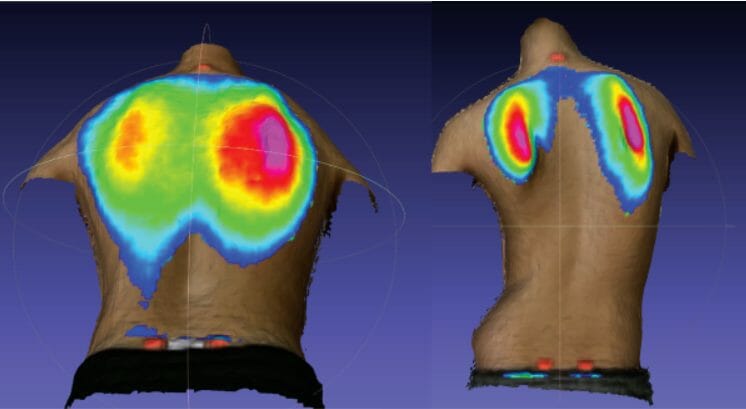Dr Tom Shannon, Vicon Director and Co-Founder of Oxford Metrics, recently presented the latest findings from a major idiopathic scoliosis study to 200 delegates at ScoSym, the first international symposium on current trends in research into the disease and other spinal deformities, held in Novi Sad, Serbia in June.
The presentation highlighted the results of collaborative research study, conducted by Tom, in conjunction with Professor Nachiappan Chockalingam of the Centre for Biomechanics and Rehabilitation Technologies at Staffordshire University, and Nikola Jevtic, Director of the Scolio Centar in Novi Sad. Since 2017, the three have been collaborating on new ways to use low-cost, readily available technologies, to improve the quality of life of young people diagnosed with curvature of the spine of unknown causation.
While in Serbia, Nachiappan and Tom also visited Nikola’s clinic to carry out patient measurements, the results of which will be combined with the results of similar programmes being conducted in Romania and Bulgaria.
In idiopathic scoliosis, the spine curves to the left or the right, simultaneously rotating. There is no definite cause. The first indications of the disease are often changes in body symmetry and back surface shape. It can force the ribs outwards, causing a hump in the back, a distinctive characteristic of a scoliotic curve in the upper spine, which can cause significant distress in affected patients.
Recent research has demonstrated that the addition of validated body asymmetry metrics, alongside conventional radiologically derived measures could be beneficial when designing a patient-specific treatment plan and quantifying outcomes.
In their research, Tom, Nachiappan and Nikola were looking to understand how certain surface measurement applications could be applied clinically to assess patients showing indications of idiopathic scoliosis.
After obtaining the necessary ethical approvals, the researchers investigated the back symmetry of a group of 23 skeletally-mature subjects not exhibiting any musculoskeletal disease, to ensure the apparatus did not introduce any bias, and 32 adolescents attending Schroth exercise clinics in Serbia and Bulgaria. The results demonstrated a higher presence of cosmetic deformity in the back surface topographic measures among the patients attending Schroth exercise clinics, compared to the findings from a the typically developed group.
The study has provided the confidence needed to continue research into how these surface measures can be applied clinically, as an additional resource to existing radiological and physical assessments.



